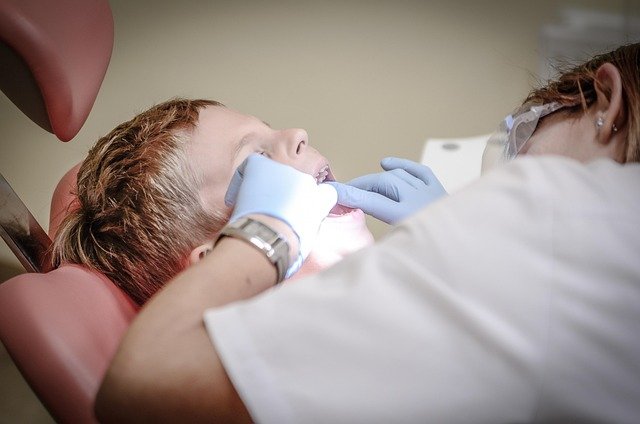Dental Implant Costs and Options in Australia for 2025: Comprehensive Guide and Alternatives
Dental implant costs in Australia for 2025 vary widely based on procedure type, materials, and patient needs. This guide explores pricing, available options, alternatives like dentures, financing plans, and where to find affordable or reduced-cost treatments.

Understanding the Cost Structure of Dental Implants
Dental implant costs in Australia follow a multi-layered structure that can be confusing for many patients. The total expense typically encompasses several components rather than a single fee. The titanium implant fixture (the screw that fuses with bone) represents just one element of the overall cost. Additional expenses include the abutment (connecting piece), crown (visible tooth portion), initial consultations, imaging (CT scans or X-rays), and any necessary preliminary procedures such as bone grafting or tooth extractions.
The surgical procedure itself carries separate fees, as does the prosthetic phase when the crown is designed and attached. Many patients are surprised to learn that a significant portion of the cost comes from the laboratory work required to create custom-fitted prosthetic components and the specialized professional expertise needed throughout the multi-stage process. Understanding this layered cost structure helps patients better comprehend their itemized treatment plans and avoid unexpected expenses.
Price Ranges for Dental Implant Options in Australia 2025
The cost of dental implants in Australia for 2025 varies significantly based on several factors, including geographic location, the dentist’s experience, implant materials, and the complexity of the individual case. For a single tooth implant, Australians can expect to pay approximately $3,000 to $7,500 for the complete procedure. This includes the implant, abutment, and crown.
More extensive treatments naturally command higher prices. Full-arch solutions like All-on-4 or All-on-6 implants typically range from $23,000 to $35,000 per arch. These costs reflect the comprehensive nature of replacing an entire arch of teeth with just four to six strategically placed implants. Metropolitan centers like Sydney and Melbourne generally have higher pricing than regional areas, reflecting higher operating costs and greater specialist concentration.
Patients should note that many Australian practitioners offer payment plans to make treatments more accessible. Additionally, private health insurance may provide partial coverage for the prosthetic components (crowns), though the surgical aspects of implant placement are generally not covered under most dental insurance plans.
Dental Implant Alternatives and Their Costs
While dental implants offer excellent long-term value, their initial cost can be prohibitive for some patients. Several alternatives exist with varying price points and outcomes. Traditional dental bridges represent a common alternative, costing between $2,500 and $6,500 for a three-unit bridge. This option requires healthy adjacent teeth to support the bridge structure but avoids surgical intervention.
Removable partial dentures present another more affordable option, generally ranging from $900 to $1,800. However, they lack the stability and natural feel of implants. Complete dentures for full tooth replacement typically cost between $1,800 and $3,500 per arch but may require adjustments and eventual replacement.
More recent innovations like mini dental implants offer a middle-ground solution at approximately $1,000 to $2,500 per implant. These smaller-diameter implants require less invasive surgery and are often used to stabilize dentures rather than support individual crowns. Each alternative comes with distinct advantages and limitations regarding durability, comfort, maintenance requirements, and impact on oral health over time.
Advanced Implant Technologies and Their Price Impact
Technological advancements continue to shape dental implant options and their associated costs. Computer-guided implant surgery, which utilizes 3D planning software and surgical guides, adds approximately $500 to $1,500 to the procedure cost but delivers enhanced precision and potentially faster healing times. Similarly, immediate-load implants (same-day teeth) command premium pricing—typically 10-15% more than traditional protocols—but reduce the overall treatment timeline significantly.
Material innovations also affect pricing. While traditional titanium implants remain the standard, zirconia (ceramic) implants have emerged as metal-free alternatives costing approximately 20-25% more. These newer materials offer advantages for certain patients, particularly those with metal sensitivities or thin gum profiles where titanium might cause aesthetic concerns.
Comparison of Dental Implant Providers and Options in Australia
| Provider Type | Average Single Implant Cost | Full-Arch Solution Cost | Warranty Period | Financing Options |
|---|---|---|---|---|
| Specialist Periodontist/Prosthodontist | $4,500-$7,500 | $28,000-$35,000 | 5-10 years | Payment plans up to 24 months |
| General Dentist with Implant Training | $3,000-$5,500 | $23,000-$30,000 | 3-7 years | Payment plans up to 18 months |
| Dental Hospital Clinics | $2,800-$4,500 | $20,000-$27,000 | 2-5 years | Limited options |
| Teaching Institutions | $2,500-$4,000 | $18,000-$25,000 | 1-3 years | Student payment plans |
| Overseas Dental Tourism (e.g., Thailand, Philippines) | $1,200-$2,800 | $10,000-$18,000 | Variable (0-5 years) | Typically upfront payment |
Prices, rates, or cost estimates mentioned in this article are based on the latest available information but may change over time. Independent research is advised before making financial decisions.
Factors Affecting Long-term Value and Success
While initial costs remain a primary consideration, understanding the factors affecting the long-term value of dental implants helps contextualize their pricing. Implant quality, practitioner expertise, and proper treatment planning significantly influence success rates. Premium implant systems from manufacturers with extensive research backing may cost more initially but often demonstrate better osseointegration (bone fusion) and longevity.
Post-treatment care also impacts long-term outcomes. Patients should factor in maintenance costs, including specialized cleaning tools, regular professional maintenance visits, and potential component replacements over time. When properly maintained, dental implants can last decades or even a lifetime, making them potentially more cost-effective than alternatives requiring frequent replacement or adjustment.
The psychological and quality-of-life benefits, while difficult to quantify financially, represent another aspect of implant value. Many patients report improved confidence, speech, and dietary freedom following successful implant treatment—benefits that extend well beyond the purely functional restoration of missing teeth.
This article is for informational purposes only and should not be considered medical advice. Please consult a qualified healthcare professional for personalized guidance and treatment.




